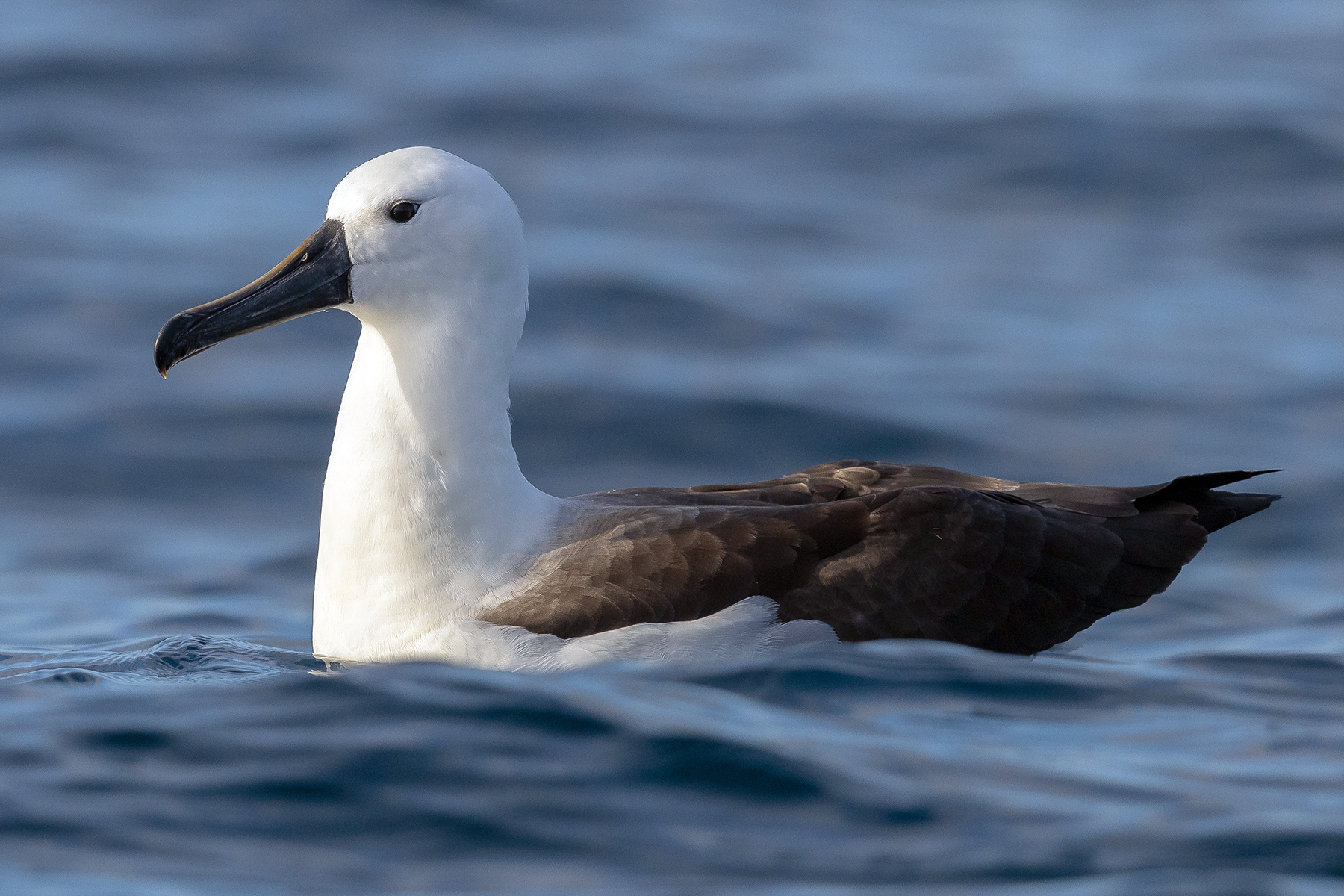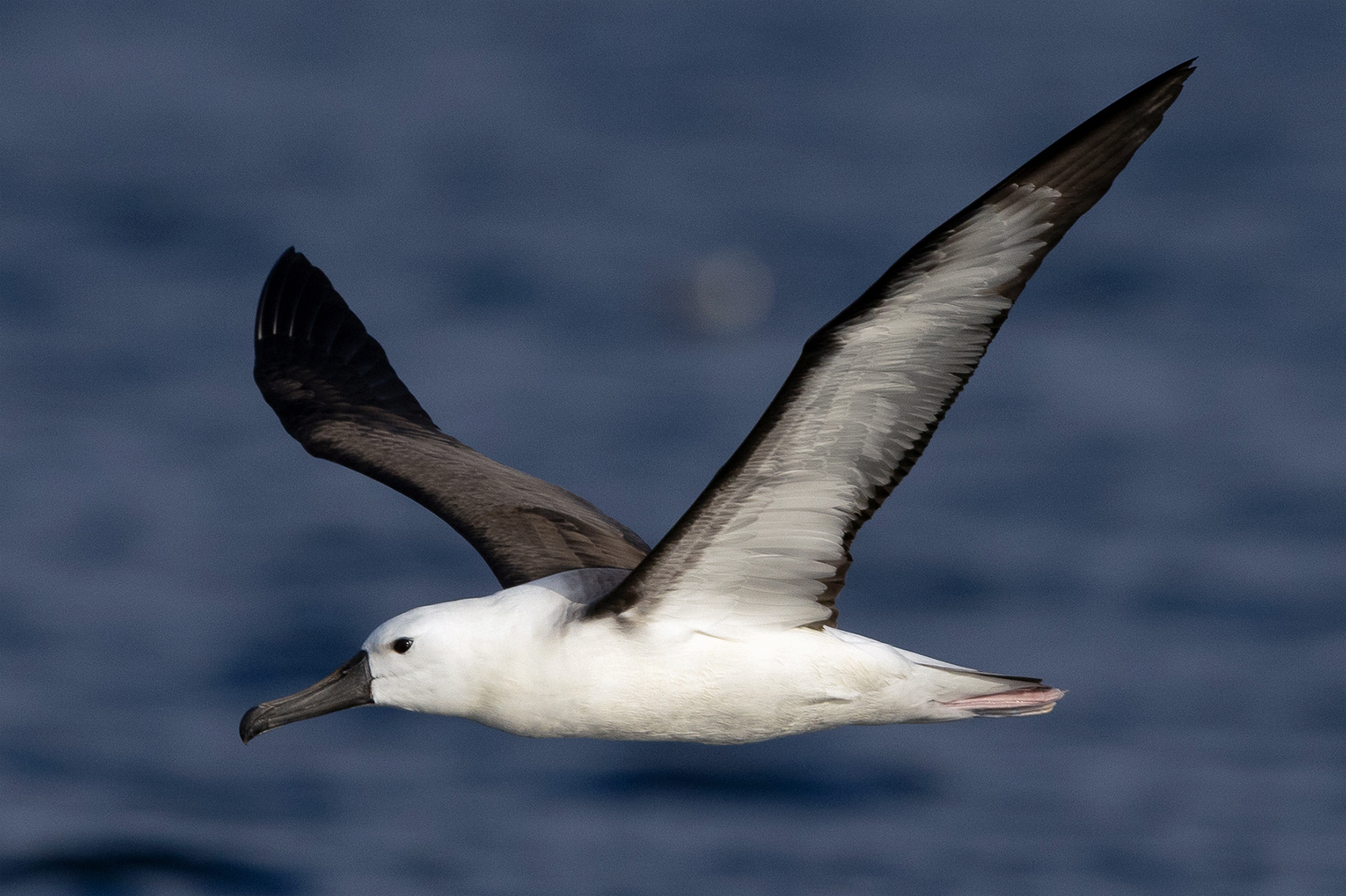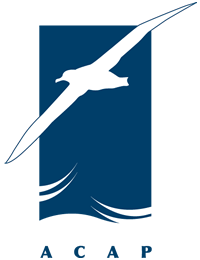 The colour-banded Indian Yellow-nosed Albatross at ‘The Petrel Station’
The colour-banded Indian Yellow-nosed Albatross at ‘The Petrel Station’
UPDATE: Thierry Boulinier, Projecr Manager writes "this individual had been vaccinated against avian cholera as part of the research project carried out by our group at CEFE, CNRS-Université Montpellier, on infectious disease circulation in south polar seabirds (French Polar Institute IPEV project 1151-ECOPATH." Karine Delord adds the bird was banded in March 2024, Karine Delord adds: "juvenile banded in March 2024 by Lucie (volunteer of the Thierry Boulinier IPEV project) and vaccinated against fowl cholera at around 10 days old".
A colour-banded Indian Yellow-nosed Albatross Thalassarche carteri was spotted at sea on a ‘pelagic’ seabird-watching tour at ‘The Petrel Station’ on the shelf edge, approximately 40 km offshore on the shelf edge off Tutukaka, North Island, New Zealand on 22 September 2024. Photographed by Aaron Skelton, the juvenile bird, so identified by only a faint trace of yellow on its upper mandible, was carrying the colour band white EW4 on its right leg.

Close-up! Colour bands, and a good camera, allow for individual identification at sea
Following an inquiry, it was confirmed by a French research team that the bird was banded as a chick in the most recent (2023/24) breeding season as part of a long-term monitoring programme on France’s Amsterdam Island in the southern Indian Ocean that is funded by the French Polar Institute Paul-Émile Victor (IPEV) as part of the project “Seabirds and Marine Mammals as Sentinels of Global Change in the Southern Ocean” (Project: 109 ORNITHO2E), The population on Amsterdam has plummeted in recent decades, notably due to avian cholera.


White EW4 in flight, all photographs by Aaron Skelton
The Petrel Station Seabird Tours & Research - Tutukaka, New Zealand writes of the record of an Endangered Indian Yellow-nosed Albatross on its Facebook page:
“These stunning [albatrosses] are extremely scarce off the New Zealand coast with few records in the last 20 odd years. Back in the 1980's they were the most common albatross species in our area but due to fishing bycatch and disease at their Indian Ocean breeding sites their numbers have plummeted resulting in fewer now reaching the NZ coast.”
 Ian Sinclair writes of this photograph of the banded bird by Aaron Skelton; "Yes, Indian YNA. tell by the faint yellow on the bill near the base being pointed."
Ian Sinclair writes of this photograph of the banded bird by Aaron Skelton; "Yes, Indian YNA. tell by the faint yellow on the bill near the base being pointed."
And Ian will know, his careful field observations on Gough and Prince Edward Islands were instrumental in the yellow-nosed albatross being separated into two species
Read the trip report for the tour on which the colour-banded albatross was seen and photographed here.
With thanks to Thierry Boulinier, CEFE, CNRS-Université Montpellier, France and Karine Delord, Centre d'études biologiques de Chizé, France and Ian Sinclair for information.
Reference:
Brooke, R.K., Sinclair, J.C. & Berruti. A. 1980. Geographical variation in Diomedea.chlororhynchos (Aves: Diomedeidae) Durban Museum Novitates 12 (15).
John Cooper, Emeritus Information Officer, Agreement on the Conservation of Albatrosses and Petrels, 26 September 2024, updated 27 Setember 2024

 English
English  Français
Français  Español
Español